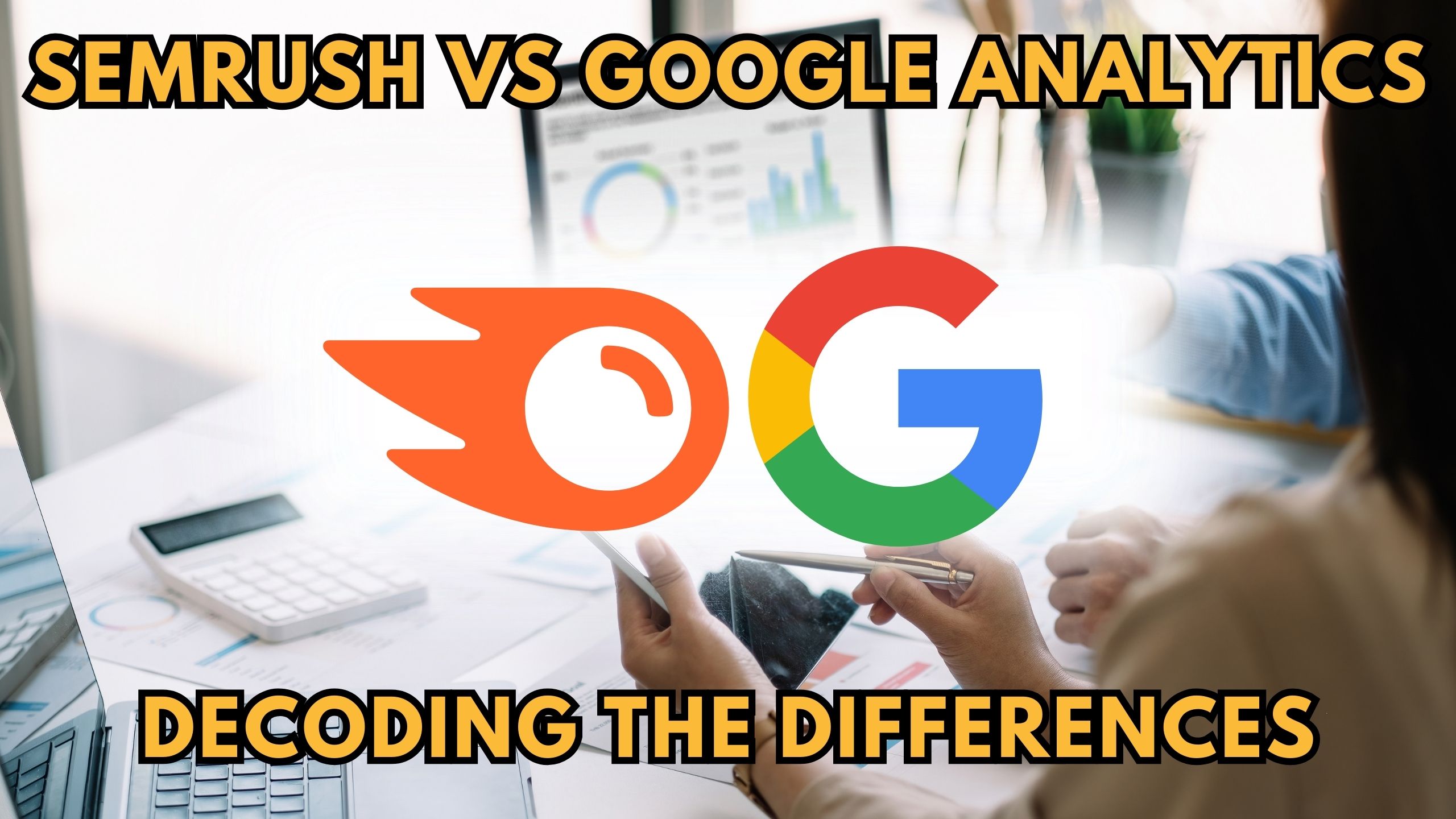Semrush vs Google Analytics: Decoding the Differences
- Data as a Service (DaaS) Software Marketing & Analytics


Semrush vs Google Analytics: Decoding the Differences
In the dynamic realm of digital analytics, the choice between Semrush and Google Analytics carries substantial weight, shaping how businesses interpret and refine their online strategies. This comprehensive exploration aims to peel back the layers of each tool, shedding light on their unique features and applications.
1. Understanding Web Traffic with Google Analytics
Google Analytics stands as the cornerstone for web analytics, offering an extensive array of tools to dissect and comprehend online user behavior. From tracking visitor demographics to discerning traffic sources and measuring conversion metrics, Google Analytics provides a panoramic view of a website’s performance. It excels in furnishing insights into critical aspects such as user journey, engagement patterns, and the efficacy of marketing endeavors.
Businesses leveraging Google Analytics gain the ability to ascertain which pages resonate most with their audience, understand the effectiveness of marketing channels, and optimize their online presence for maximum impact. The platform’s user-friendly interface and deep analytical capabilities make it an indispensable ally for any entity seeking to navigate the intricacies of the online landscape.
2. Unveiling SEO Potential with Semrush
In the realm of Search Engine Optimization (SEO), Semrush emerges as a trailblazer, offering a specialized suite of tools tailored to boost a website’s visibility on search engines. Semrush goes beyond conventional analytics by providing a comprehensive SEO toolkit, encompassing functionalities like keyword research, backlink analysis, and competitor intelligence.
Semrush becomes particularly relevant for businesses aiming to ascend search engine rankings. It enables users to discover top-performing keywords, refine content strategies, and understand competitor tactics. The tool’s intuitive dashboard and actionable recommendations make it an essential companion for businesses committed to optimizing their online content for search engines.
In essence, while Google Analytics paints a broad picture of website performance and user interactions, Semrush narrows its focus to the intricacies of SEO, enabling businesses to fine-tune their strategies for maximum visibility in search engine results.
3. Enhancing Content Strategies with BuzzSumo
For content creators and marketers, BuzzSumo complements both Google Analytics and Semrush. It provides insights into content performance, identifies trending topics, and helps refine content strategies. By understanding what resonates with the audience, BuzzSumo becomes a pivotal tool for optimizing content creation and distribution.
4. Improving User Experience with Hotjar
Hotjar offers a unique perspective by focusing on user experience through features like heatmaps and session recordings. While Google Analytics and Semrush provide quantitative data, Hotjar adds a qualitative layer by visualizing how users interact with your website. This tool is particularly relevant for businesses aiming to enhance website usability and identify areas for improvement.
5. Strengthening Social Media Presence with Buffer
For businesses emphasizing social media analytics and management, Buffer is a valuable addition. It facilitates scheduling posts, analyzing engagement metrics, and tracking social media performance. Buffer seamlessly integrates with both Google Analytics and Semrush, offering a holistic approach to managing and optimizing social media presence.
Conclusion: Choosing the Right Analytics Mix
The decision between Semrush and Google Analytics hinges on the specific objectives and priorities of a business. Google Analytics, with its broad analytical scope, is ideal for understanding overall website performance and user behavior. On the other hand, Semrush shines in the realm of SEO, providing a suite of tools crafted to enhance search engine visibility and content optimization.
For a holistic analytics approach, businesses can synergize these tools and incorporate supplementary platforms like BuzzSumo, Hotjar, and Buffer. This comprehensive mix ensures a well-rounded understanding of user interactions, content performance, and social media impact.
Unlock Analytics Potential with Subscribed.fyi
Elevate your analytics endeavors with Subscribed.fyi, the ultimate solution for managing your SaaS stack. Sign up today to unlock exclusive deals, streamline subscription management, and gain insights that propel your analytics strategy to new heights.
Relevant Links:





